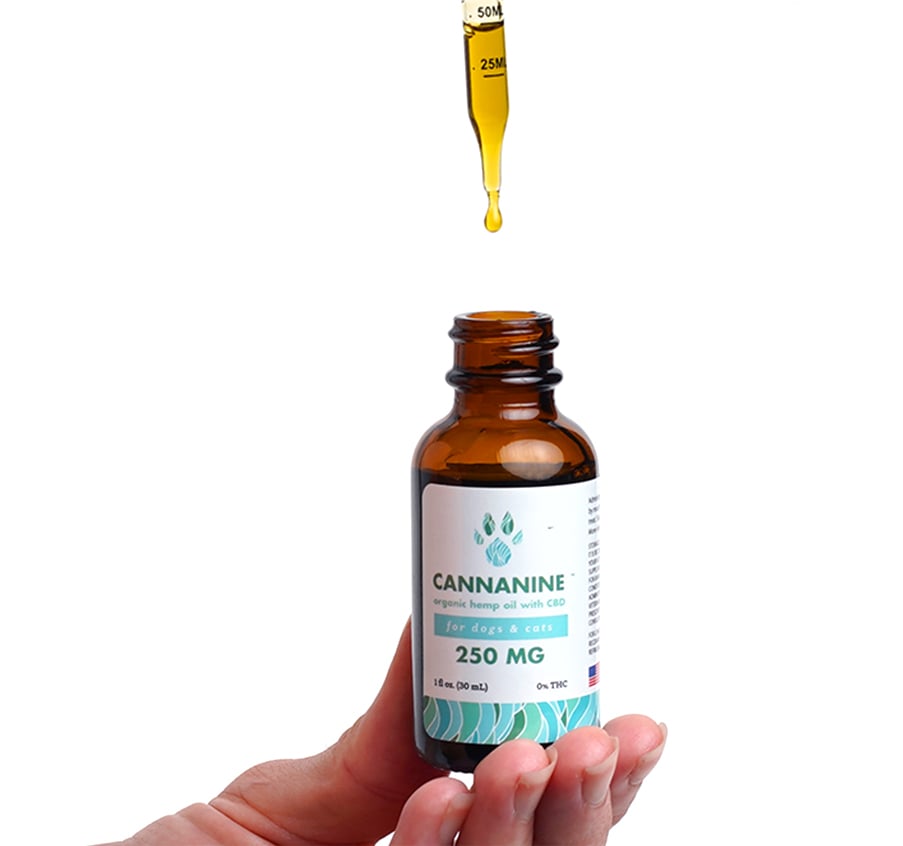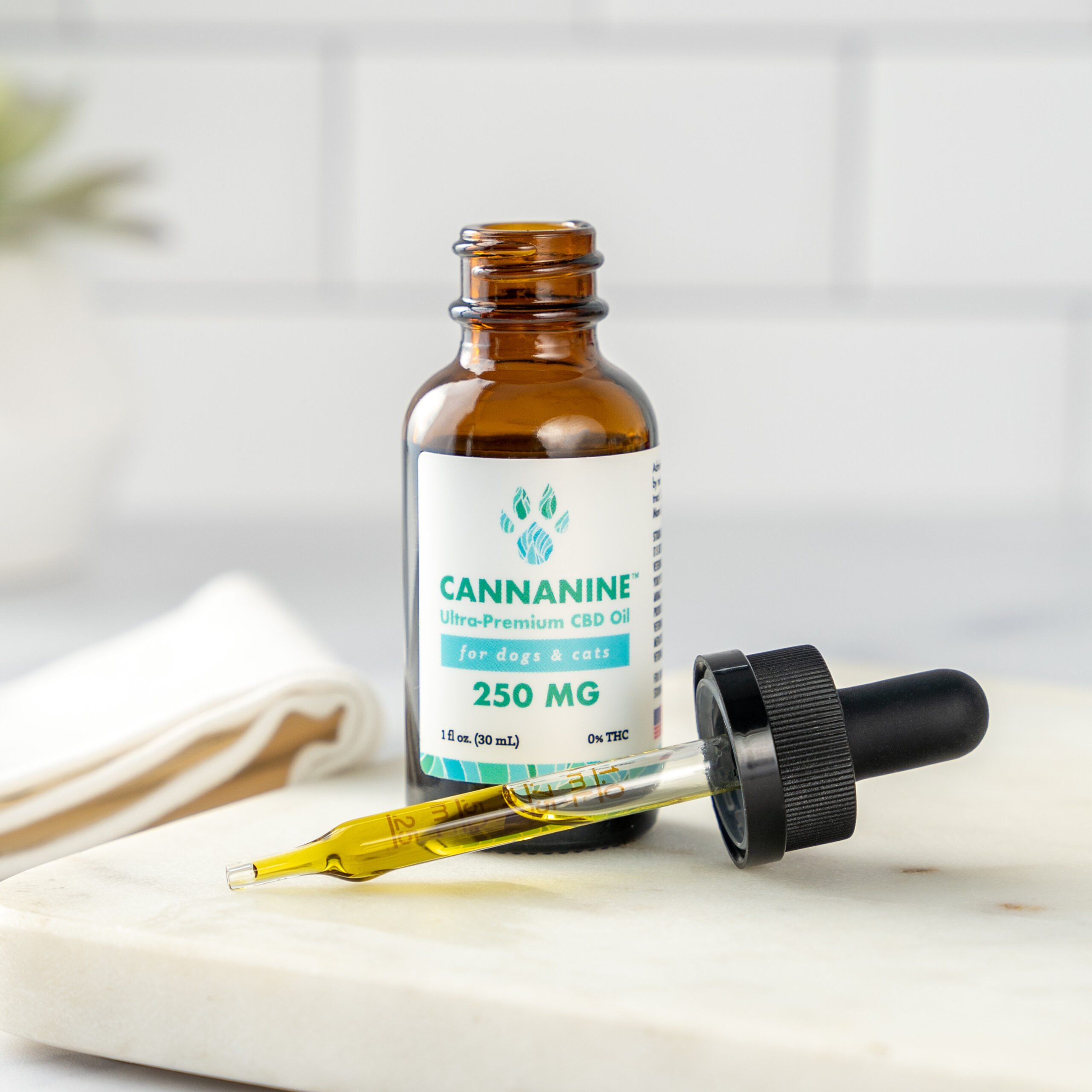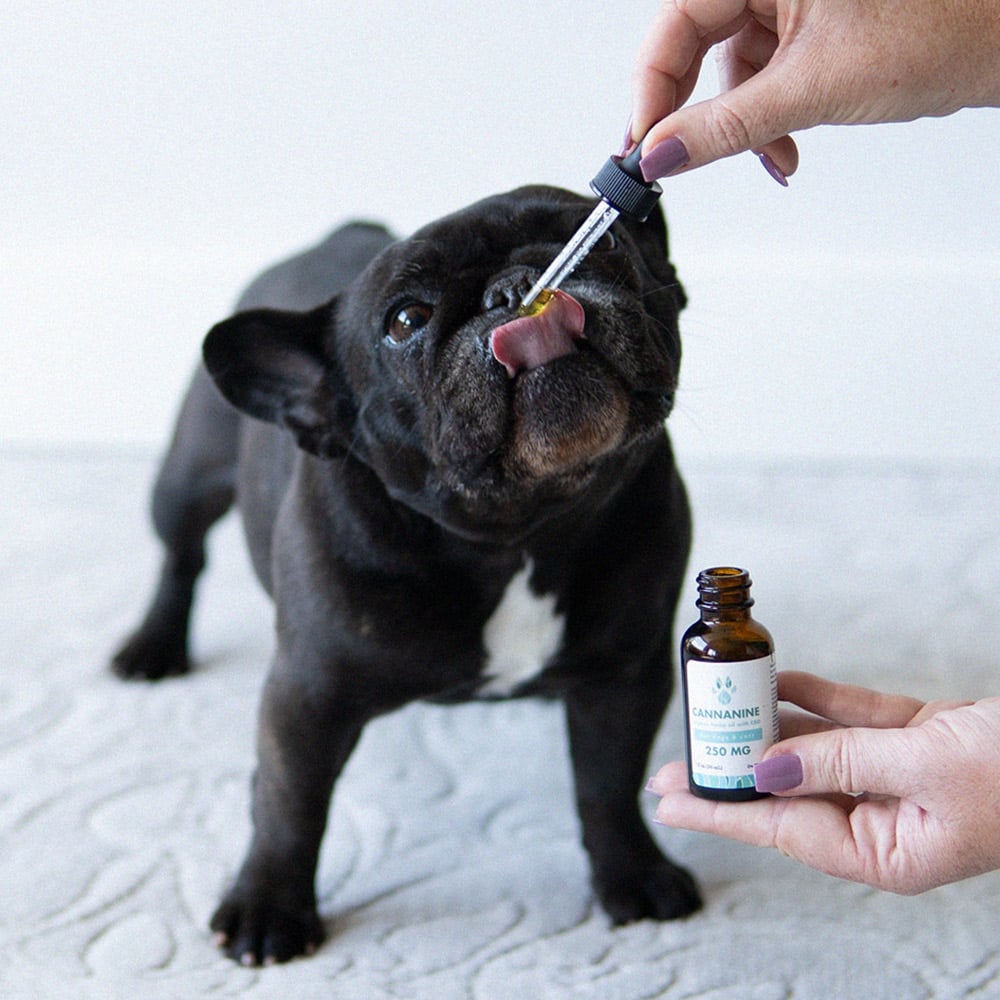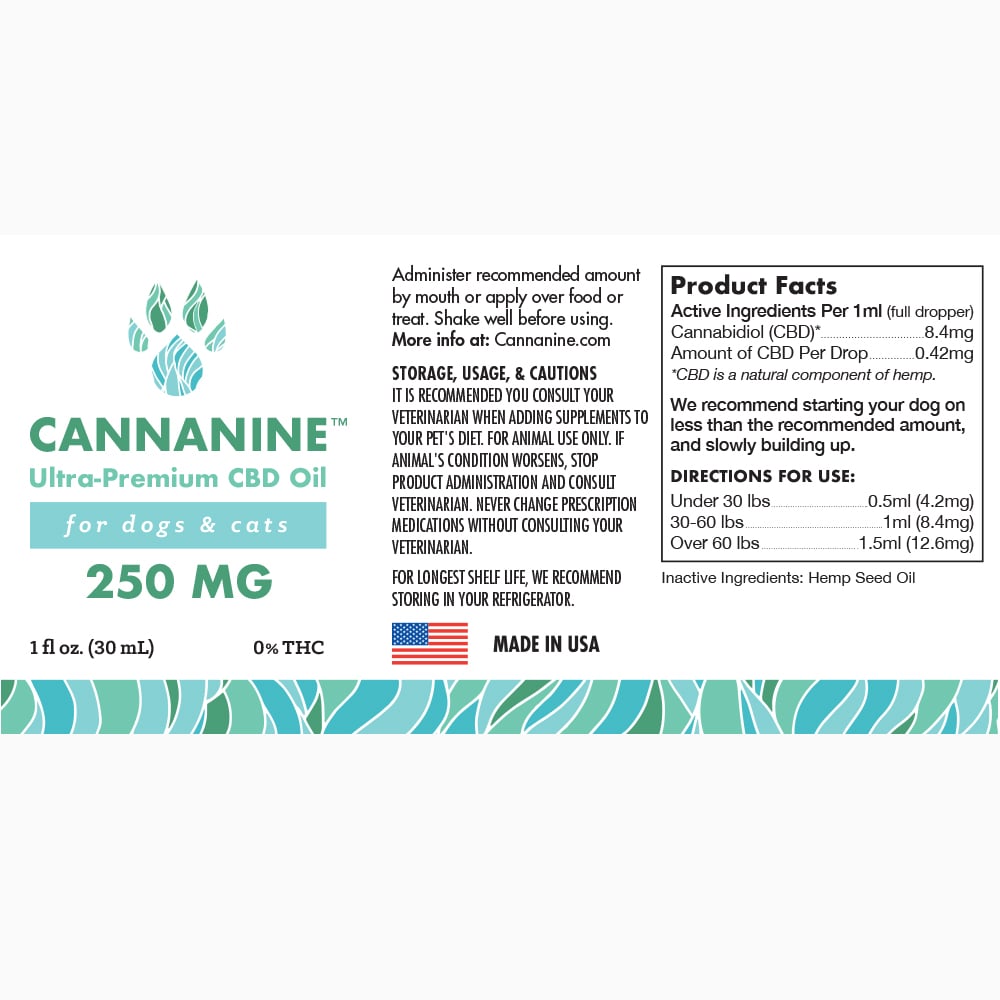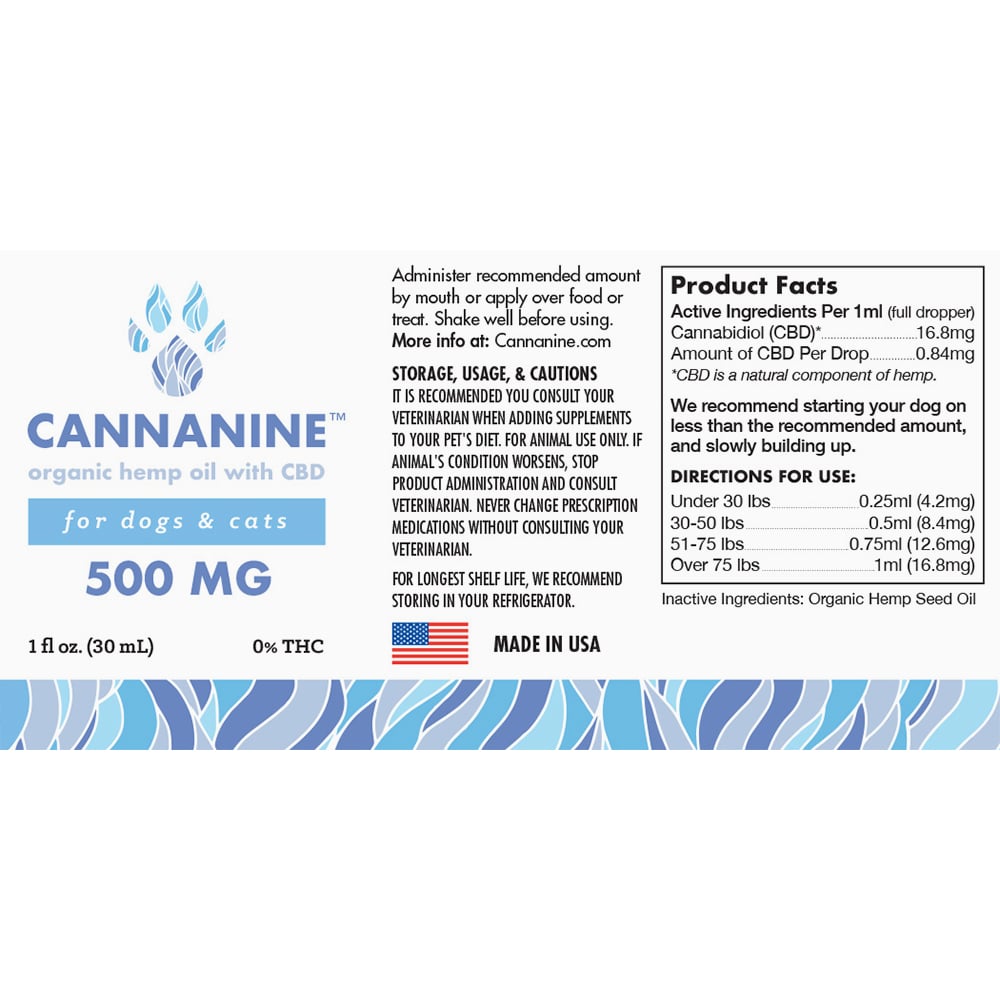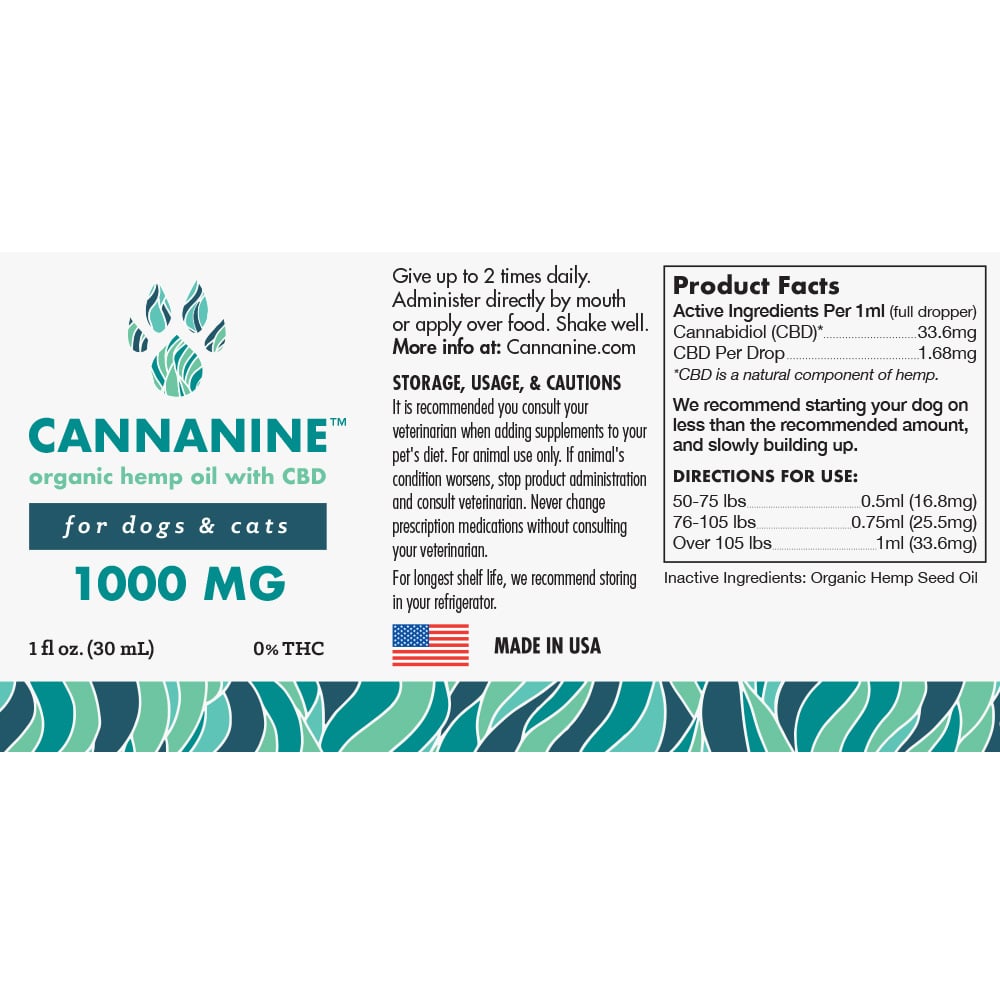Best CBD Oil For Dogs With Cushing’s
Is your dog suffering from Cushing’s disease? Whether your loyal companion is potentially developing recent symptoms or has been fighting Cushing’s disease for years, CBD oil can offer some relief. Some dog breeds are at a much higher risk for Cushing’s disease that could develop sooner rather than later.
For these dogs, starting an early CBD oil regimen can help them enjoy more fun and active days.





CBD Oil For Dogs With Cushing’s Disease
Cannanine™ CBD oil for dogs with Cushing’s disease can help your furry friend reduce the pain they may be experiencing due to Cushing’s disease symptoms or treatments. Our hemp oil is specifically formulated to help improve mobility, reduce pain, and reduce inflammation.
We work with the top labs in the world to make Cannanine the safest and most effective CBD oil for dogs with Cushing’s disease on the market. Cannanine has given over 50,000 pets relief – plus, every purchase funds meals for shelter dogs in need.
Keeping my 15 year old dog walking like a champ!! I don’t think she would be around without it. So glad I gave this a try.
Everett
Popular Articles On CBD For Dogs

Made In USA
Proven Pure

Veteran Owned

100% Money Back Guarantee
All CBD Product Categories
What is Cushing’s Disease in Dogs?
Within the bodies of all mammals are the adrenal glands. These glands are located on the top of the kidneys and they are essential for all mammals to live. The adrenal glands are responsible for regulating blood pressure, blood volume, and vascular tone. They also produce hormones that help regulate metabolism, the immune system, and the stress response. Cushing’s disease is essentially when the adrenal glands, inside of a dog’s body, begin to overproduce cortisol. When too much cortisol is produced, there can be many adverse effects.
The adverse effects can range from kidney damage, diabetes, kidney failure, and even death. If a dog develops Cushing’s disease, it could be a sign that a tumor has grown either on the pituitary gland or the adrenal glands themselves. There are three main types of Cushing’s disease to be aware of. There is pituitary-dependent, adrenal-dependent, and Iatrogenic Cushing’s syndrome.
The most common is pituitary-dependent Cushing’s disease, which as mentioned earlier, is caused by a tumor on the pituitary gland. Adrenal-dependent Cushing’s disease involves a tumor that forms directly on the adrenal glands. Latrogenic Cushing’s disease is the rarest form of the disease as it is a direct result of the overuse of steroids.
What are the Symptoms of Cushing’s Disease in Dogs?
Cushing’s disease is a serious condition that could lead to serious health issues including kidney damage, blood clots, high blood pressure, diabetes, and loss of life. It is important that you be able to identify the early warning signs so that you can seek proper care for your pet to prevent the worst. Symptoms may include one or more of the following:
Increased appetite: This may be one of the harder symptoms to recognize. Sometimes dogs simply will eat whatever you put in front of them. However, if you notice a change in behavior around feeding time, for example, a constant whining for more food after they have finished their typical portion, or becoming aggressive when feeding time is over, they may be telling you that their appetite is not being entirely satisfied.
Thinning of skin: A dog that has thinning skin will have skin that begins to become fragile, abnormally soft, stretchy, or loose. You may even notice hanging folds of skin that were not present before. The thinning of the skin is a major indicator of Cushing’s disease.
Loss of hair: If your dog begins to lose an alarming amount of hair that is beyond normal shedding, it could be a symptom of Cushing’s disease that you will want to pay attention to. The hair may often fall out in clumps during grooming sessions.
Urination issues: If you notice a dramatic increase in the number of times your dog needs to urinate or they urinate in the home because they are unable to control their urination, then you may want to take notice and contact your veterinarian
Enlarged abdomen: If your dog’s abdomen becomes distended or enlarged beyond its normal contour, or it becomes hard and has an unusual shape, it could be a sign that your dog could be experiencing one of the more serious symptoms of Cushing’s disease.
Lethargy: Dogs with visible lethargy and muscle weakness could be showing signs of Cushing’s disease. If your dog is abnormally mopy or unable to play or go for long walks like normal, it could be a sign of fatigue that comes from the disease.
If you begin witnessing any of these symptoms, you should contact your veterinarian right away. It may not be Cushing’s disease at all and it may be something much more minor, however, it is better to err on the side of caution.
Does CBD oil help with Cushing’s in dogs?
CBD oil has the ability to be extremely helpful for dogs who may be experiencing Cushing’s disease. The main ways that CBD oil can help with Cushing in dogs include addressing hormonal imbalances, attacking tumors, and alleviating painful and uncomfortable symptoms of the disease. Let us look in more detail at how CBD can be helpful in these three main ways.
Hormonal imbalances: The endocannabinoid system contains two receptors, the CB1 and CB2 receptors. CBD works directly with those receptors to bring balance to the body. The CB1 receptor is directly linked to the adipose tissue, liver, and adrenal glands, among other things. CBD oil can work to correct hormonal imbalances in the body that may be contributing to the progression and severity of Cushing’s disease.
Alleviating symptoms: CBD oil can work to alleviate some of the pain, discomfort, and anxiety your dog may be experiencing when grappling with Cushing’s disease. Additionally, CBD oil can directly help with the skin and fur-related symptoms of the disease by providing extra strength and support.
These are just a few of the ways CBD oil can help with Cushing’s in dogs. Aside from the benefits listed above, CBD oil can provide soothing support while helping to expel free radicals from the body that may be exacerbating the disease.
What is the best treatment for Cushing’s disease in dogs?
Since Cushing’s disease is caused by a tumor, there is always the option of surgically removing the tumor. However, the tumor’s location and the extent of the growth will determine whether or not surgery is feasible. If the tumor is located on the adrenal glands, then a skilled veterinarian may be able to remove the tumor quite easily. If the tumor is located on the pituitary gland, then medication is a much more likely option. The most commonly used drugs to treat Cushing’s disease are trilostane and mitotane. Always consult a veterinarian before mixing medications, however, CBD oil used in tandem with one of these drugs could be quite helpful. Not only can the CBD oil alleviate some of the symptoms related with Cushing’s disease, it could help subdue some of the negative side-effects associated with the medication.
Are dogs with Cushing’s in pain?
Cushing’s disease itself is not directly causing pain to the dog, however, some of the symptoms and particulars of the disease can be. For example, if Cushing’s disease is not properly medicated or treated, it can lead to severe kidney infections which can cause great pain and discomfort.
Dosage for CBD for Cushing’s Disease in Dogs
If you are thinking about starting your dog on a CBD oil regiment, it is best to start slow with the dosage to see how they react. The size of the dose depends entirely on the size of the dog, however, you can start with a dose somewhere between 35 to 50 mg once a day. 35 mg is ideal for smaller breeds where 50 mg may be more appropriate for large breeds. You can either serve the CBD oil directly, mix with your pet’s food, or consider purchasing CBD doggie treats.
Sources:
lakecross.com/site/blog-huntersville-vet/2021/01/28/about-cushings-disease-in-dogs
cbddoghealth.com/can-cbd-help-a-dog-with-cushings-disease/
ncbi.nlm.nih.gov/pmc/articles/PMC6813821/
pets.webmd.com/dogs/cushings-syndrome-dogs#2
petmd.com/dog/conditions/endocrine/c_dg_hyperadrenocorticism

